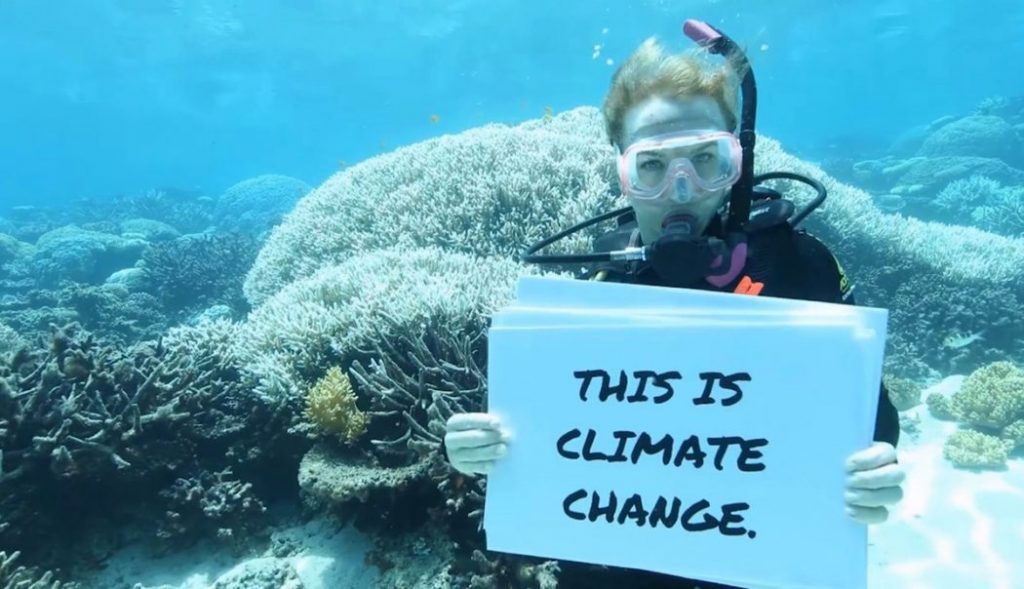An Australian icon is at risk of succumbing to a slow and silent death.
That’s the harsh reality that faces the Great Barrier Reef if fossil fuel business as usual continues unabated.
Fortunately, not everyone has given up on the Reef, including Grammy-award winning artist Flume and Greenpeace Australia Pacific.
Yesterday the globe-trotting multi-award-winning Sydneysider Flume published a new and previously unreleased track to highlight the threat that climate change poses to the Reef, encouraging viewers to act.
“Please tune in, this is important,” Flume wrote online.
An accompanying video shows exactly what is at stake by contrasting vibrant images of a healthy reef teeming with colorful coral and marine life with bleak images of the devastating effects of climate change-induced coral bleaching.
The Reef, the largest living organism on the planet and visible even from space, has suffered back to back bleaching events, impacting more than two thirds of its corals and potentially threatening its UNESCO World Heritage listing.
It’s a slow motion train wreck – but instead of being the type that you can’t stop yourself from staring at, the Reef’s demise doesn’t get the attention this national tragedy deserves.
The Reef is home to more than 1500 species of fish, 30 species of whales and dolphins, and 133 species of sharks and rays, including a significant number of threatened species.
It is one of the richest and most complex natural ecosystems on earth, and one of the most significant for biodiversity conservation.
It also underpins North Queensland’s tourism industry, supporting thousands of jobs.
But our Great Barrier Reef is in a state of emergency. This year it went through its second mass bleaching event in just two years. Since December 2015, above average sea temperatures caused by climate change and a strong El Niño have hammered the Reef and its corals.
The mining and burning of coal are Australia’s biggest contributions to climate change, heating our oceans at alarming rates. When the water is too warm for too long, corals expel the algae (zooxanthellae) living in their tissues, causing the coral to turn a ghostly white. This is coral bleaching.
In 2016, 93 percent of the corals that make up the Great Barrier Reef bleached, and 22 percent of them subsequently died. These new figures indicate that the extent of coral mortality in 2016 is worse than first thought – and further catastrophic bleaching occurred again in 2017, the full extent of which is not yet known. Consecutive bleaching events put coral under more stress and make them more susceptible to mortality.

Corals can recover from bleaching – if waters cool quickly, and if year-on-year events are halted. To give what is arguably Australia’s greatest natural wonder a fair go we need to address the cause of rising sea temperatures: the mining and burning of fossil fuels, led by coal.
There is still hope for the Reef. But we need to act now.
By Charlotte Cox, Greenpeace Australia Pacific Campaigner

